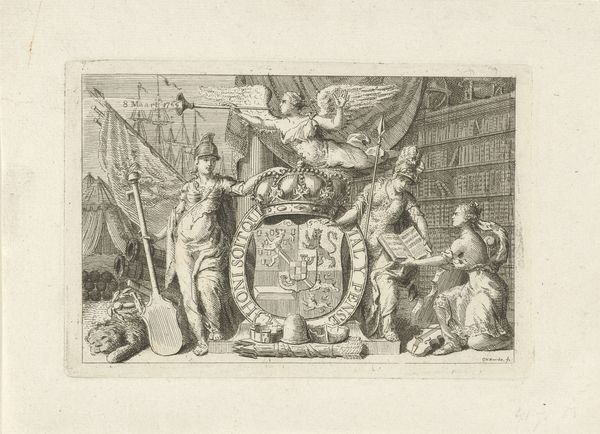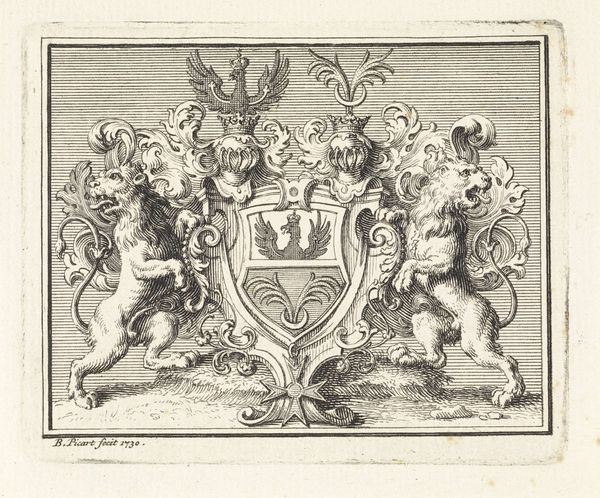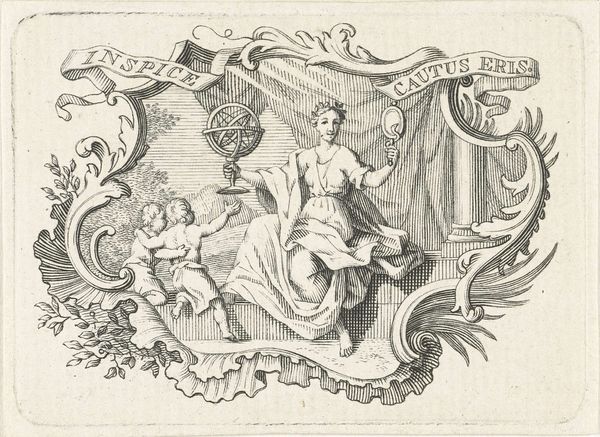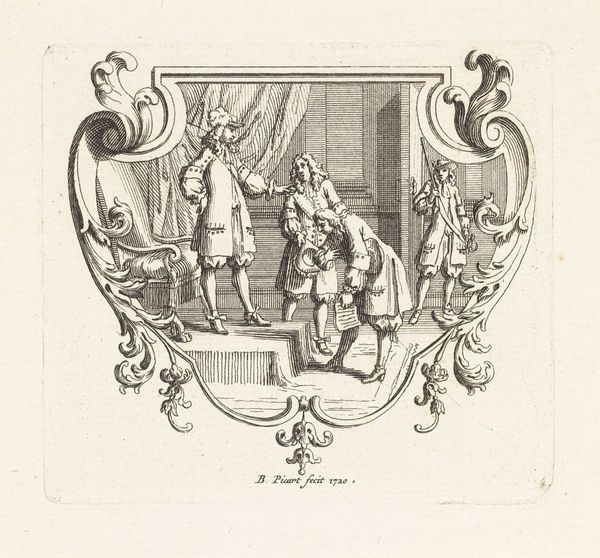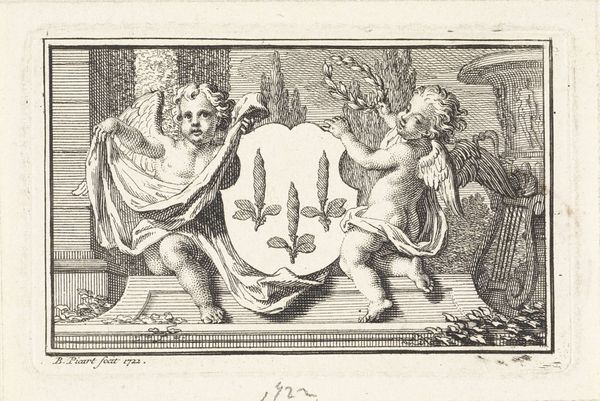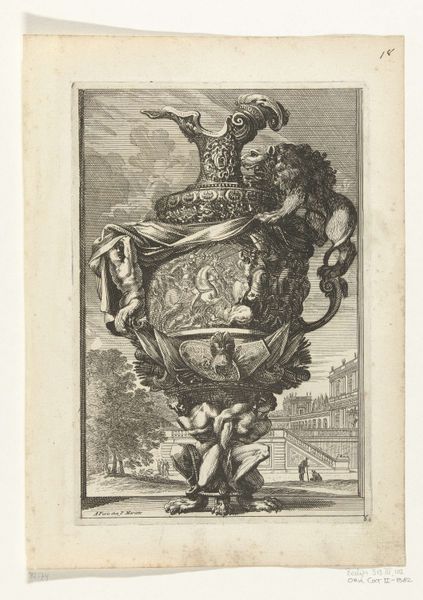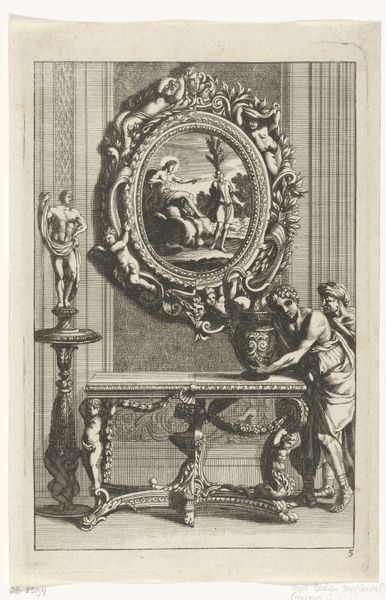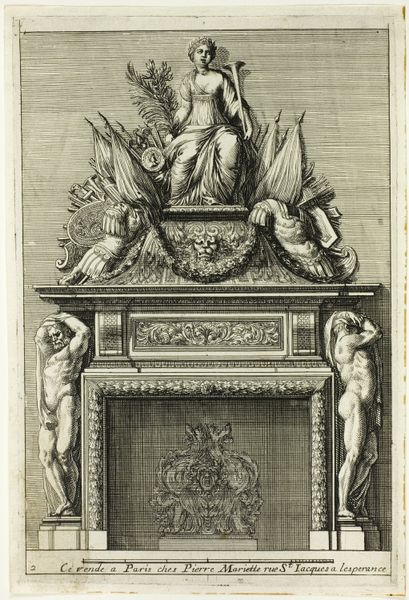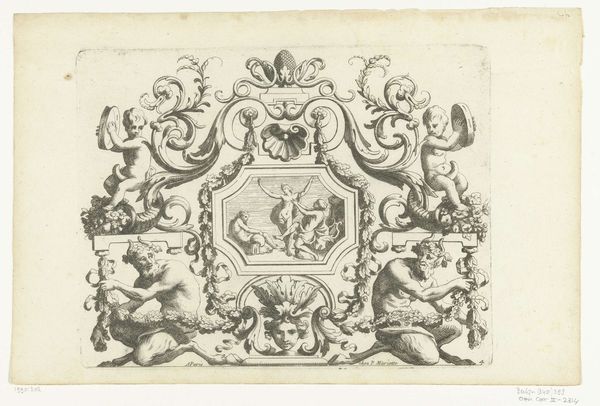
print, engraving
#
portrait
#
baroque
# print
#
caricature
#
engraving
Dimensions: height 259 mm, width 383 mm
Copyright: Rijks Museum: Open Domain
Curator: Immediately, the figure of the cherubic angel grabs my attention, though there’s also something rigid about the composition overall. Editor: Let's consider this engraving, dating back to 1688-1689 and created by Romeyn de Hooghe. It’s entitled “Wapen van ‘Jacob Steyn’” – the Coat of Arms of Jacob Steyn, currently held at the Rijksmuseum. Curator: Ah, that shifts my perspective. Suddenly, that cherub feels almost aggressively Baroque, in its presentation of wealth and power, less ethereal and more a tool for upholding hierarchy. Is that a snake it's holding? Editor: Indeed. The serpent entwined in its grasp can symbolize any number of ideas. The symbolism connects directly to the Steyn family’s self-perception. The serpent, historically, represents everything from medicine and healing to temptation and chaos. Curator: So its precise meaning depends heavily on what the Steyns believed themselves to represent? What were the values they most wished to convey through this image? I imagine they would choose something associated with wisdom and possibly prosperity? It's an explicit act of visual rhetoric, after all, trying to influence its viewers, not merely inform. The coat of arms is the anchor of the entire print! Editor: Yes, and we should analyze that coat of arms itself – observe the three ducks and the crown, each chosen carefully to articulate Steyn's lineage and status within Dutch society. Ducks are associated with domesticity. Curator: So this engraving, then, becomes a curated message, presenting an image of domestic stability that can stand as an anchor for the social position held by Jacob Steyn. Considering it’s a print, what type of distribution did it have? What kind of access would the common person have had to this declaration of wealth? Was it meant for a large audience, or for personal display among elites? Editor: Those questions are precisely where a critical analysis should take us. By teasing apart those threads –the historical, the symbolic, and the visual –we start to comprehend the rich layers of 17th-century Dutch identity. Curator: Absolutely. Now I view that angel differently. It’s not simply decorative, but an active participant in a much larger cultural narrative.
Comments
No comments
Be the first to comment and join the conversation on the ultimate creative platform.

